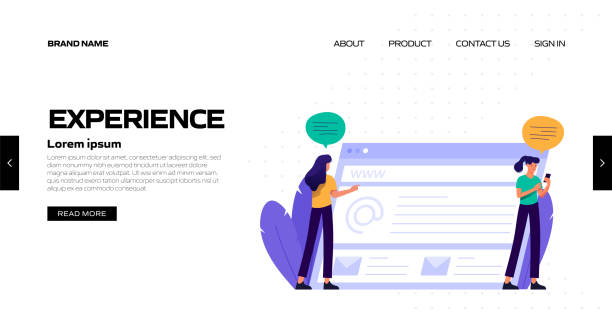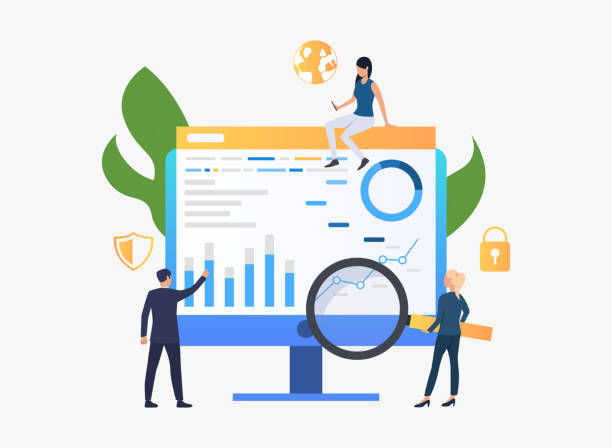An Introduction to the Importance of Professional Website Design in the Digital Age
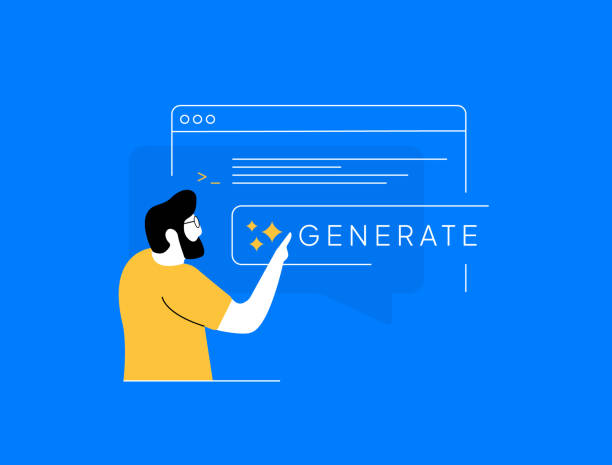
In today’s world, where the physical boundaries of businesses have blurred and markets are increasingly shifting towards the digital space, having a #website is not just an option, but an undeniable necessity.
However, merely having an online presence is not enough; what matters is a professional website design that can truly represent your business’s identity and values.
A well-designed website is often the first point of contact for many potential customers with your brand and can leave a lasting first impression.
Have you ever considered the hidden costs an unprofessional website can incur on your credibility and revenue?
Professional website design not only encompasses visual aspects but also covers a wide range of technical and user criteria.
From page loading speed to smooth user experience (UX) and an attractive user interface (UI), each of these factors plays a vital role in attracting and retaining an audience.
The ultimate goal is to create a digital platform that easily guides users to the information they need, establishes effective communication with them, and ultimately converts them into loyal customers.
This is a #strategic_investment for the long-term growth and sustainability of your business.
Furthermore, in the field of #digital_marketing, a strong website serves as the backbone of all your online activities.
All advertising campaigns, from Google Ads to social media activities, ultimately direct users to your website.
Therefore, if your website fails to meet user expectations, all your marketing efforts will be wasted.
For effective #branding and establishing a powerful presence in today’s competitive landscape, nothing is as crucial as a user-friendly and professional website design.
This is especially important for startups looking to build trust in the market.
Tired of your e-commerce website not generating as much revenue as it could? Rasaweb, specializing in professional e-commerce website design, solves this problem permanently!
✅ Increased sales rate and revenue
✅ High loading speed and unparalleled user experience
⚡ Get a free consultation for e-commerce website design
Key Elements in User Experience (UX) and User Interface (UI) Design

When talking about professional website design, two fundamental and inseparable concepts, namely User Experience (UX) and User Interface (UI), come to the fore, playing a pivotal role in the success of a website.
User experience refers to the user’s overall feeling and reaction when interacting with your website.
Is navigation on your website easy? Is the information the user needs quickly and clearly accessible? Is the purchase or registration process free of complexity and confusion? These are questions that UX designers must answer to ensure that the user has an enjoyable and flawless experience on your website.
A excellent user experience not only encourages users to return but also increases the likelihood of them converting into customers.
In contrast, User Interface (UI) addresses the visual and interactive aspects of a website.
This includes all elements the user interacts with: buttons, forms, typography, color palette, and the overall page layout.
A attractive and cohesive UI helps users easily connect with the website’s content and interact effectively.
Harmony between aesthetics and functionality is the core of a successful UI.
Professional website design requires a deep understanding of color psychology, graphic design principles, and interaction patterns.
The proper use of white space, correct contrasts, and clear visual hierarchy all significantly contribute to the readability and ease of use of a website.
Our web development teams consistently emphasize that UI and UX complement each other.
A beautiful UI without a strong UX is like a luxury car that is difficult and unpleasant to drive; and a strong UX without an attractive UI is like a powerful tool with an unappealing appearance that might deter users from the outset.
Proper integration of these two elements in the website design process ensures that your website not only looks beautiful but also has high efficiency and effectiveness.
For this reason, investing in these two areas is a vital step towards achieving a competitive and professional website design.
The Importance of Search Engine Optimization (SEO) in the Web Design Process
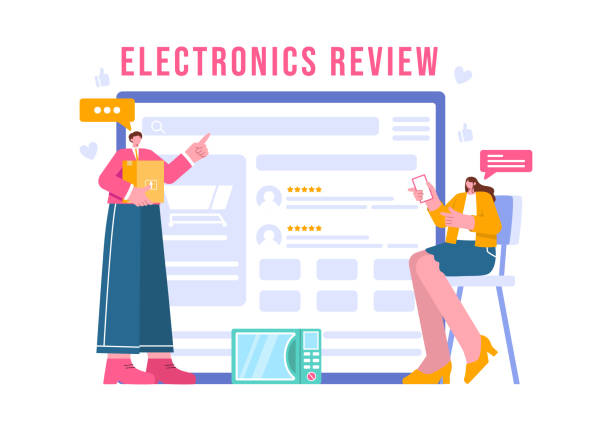
Professional website design cannot reach its maximum potential without considering Search Engine Optimization (SEO) principles.
SEO is a process that helps your website achieve a higher rank in search engine results like Google, increasing its visibility.
In fact, even if you have the most beautiful and user-friendly website, if users cannot find it, it loses its true value.
A comprehensive approach to professional website design must prioritize SEO from the very beginning.
This includes selecting appropriate keywords, optimizing URL structure, using title tags and meta descriptions, and creating high-quality, relevant content.
Beyond this, website loading speed, responsiveness (Responsive Design) for various devices, and website security (using HTTPS) are also crucial SEO factors directly related to web design.
Google and other search engines prioritize websites that offer a better user experience and are technically sound.
Ignoring these factors in the early design stages can lead to exorbitant costs for subsequent optimizations.
For this reason, a specialized team in professional website design always begins with an SEO strategy in mind.
This ensures that the website is not only attractive to users but also understandable and rankable by search engines.
This is a long-term investment that will bring significant returns in the form of increased organic traffic and new customers.
Competitor analysis and popular keyword research are inseparable parts of this process to ensure your website can gain an advantage over competitors.
| SEO Factor | Description | Importance |
|---|---|---|
| Site Loading Speed | The time it takes for page content to fully load. | Very High; direct impact on user experience and ranking. |
| Mobile Compatibility (Responsive Design) | Website design such that it displays correctly on all devices (desktop, tablet, mobile). | High; due to increased mobile use for searching. |
| URL Structure and Navigation | Using short, descriptive URLs and a logical navigation hierarchy. | Medium; aids search engine crawling and user experience. |
| Security (HTTPS) | Using the secure HTTPS protocol for data encryption. | High; direct ranking factor and builds user trust. |
Content Strategy; The Beating Heart of Every Professional Website
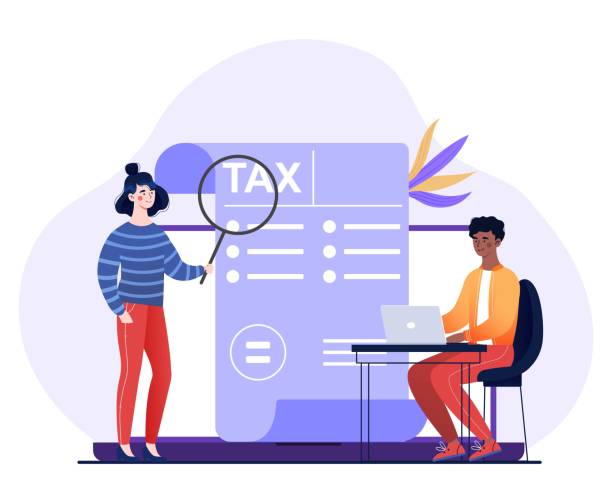
Within the framework of professional website design, content plays a vital and irreplaceable role.
A website without quality content is like an empty display window with no products to offer.
Content strategy means planning, producing, and managing content that is not only engaging and informative but also meets the needs of your target audience and guides them towards your business goals.
This includes various types of content: blog articles, product and service descriptions, videos, infographics, case studies, and even frequently asked questions.
Every piece of content must be carefully selected and produced to not only provide useful information but also enhance your credibility.
Thought-provoking and analytical content can make users think and keep them on your website for a longer period.
For example, you can increase user engagement by providing interesting statistics, in-depth market trend analyses, or posing questions that captivate the audience’s mind.
At the same time, educational and guiding content is also crucial for establishing your position as a credible authority in your industry.
Professional website design should provide a space to display this content in an organized and accessible manner so that users can easily find the information they need.
Regular content updates are also an important aspect of content strategy.
Search engines give more value to websites that produce fresh and relevant content.
This not only helps your website’s SEO but also gives users a reason to return to your website frequently.
Did you know that websites with active blogs attract more organic traffic than those without blogs? This is a proven fact in the world of content marketing.
Therefore, investing in high-quality content production and planning a strong content strategy is an integral part of every successful professional website design.
Does your current website convert visitors into customers or scare them away? Solve this problem permanently with professional corporate website design by Rasaweb!
✅ Build strong credibility and branding
✅ Attract target customers and increase sales
⚡ Get a free consultation now!
Security and Performance; The Pillars of Professional Website Design
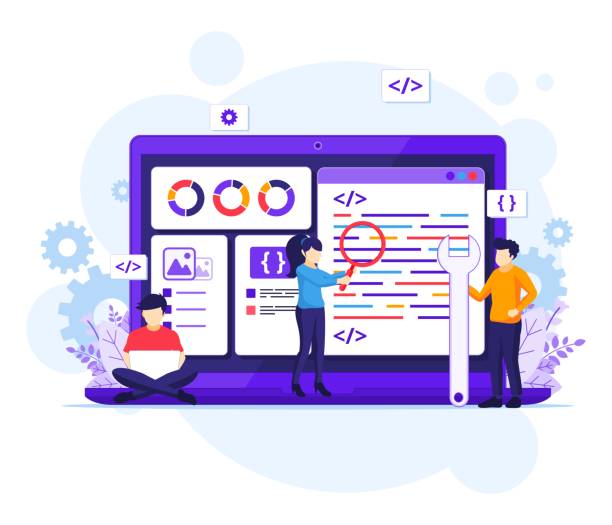
In today’s challenging digital world, professional website design without careful consideration of security and performance is like building a house without a strong foundation.
Website security not only means protecting your customers’ and business’s sensitive data but also maintaining their trust.
Cyberattacks, data breaches, and malware can quickly harm your reputation and lead to serious financial and legal consequences.
Using SSL/TLS certificates (HTTPS), powerful firewalls, regular updates of software and plugins, and continuous data backups are among the essential measures to ensure website security.
A professional web designer always prioritizes these aspects.
On the other hand, website performance refers to its speed and responsiveness.
Today’s users are impatient and expect websites to load quickly.
Every second of loading delay can lead to the loss of visitors and potential customers.
Performance improvement includes image optimization, minification of unnecessary code, using Content Delivery Networks (CDNs), and choosing a reliable and fast hosting provider.
Professional website design should be structured from the outset to facilitate these optimizations and utilize technologies that ensure the highest speed and efficiency.
The importance of these two aspects in professional website design goes beyond user expectations; search engines also rank secure and fast websites higher in their results.
A website that is slow or insecure not only drives users away but also harms its SEO ranking.
A responsible web development team always considers security protocols and performance tests as an integral part of the development process to ensure that the final website is not only beautiful and functional but also secure and fast.
This approach guarantees long-term success and preserves business credibility in the online space.
Integrating E-commerce Systems for Online Sales
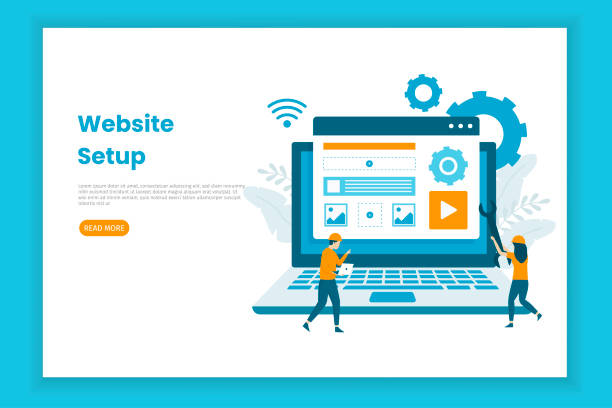
For businesses planning to sell their products or services online, professional website design must include the integration of a powerful and efficient e-commerce system.
A successful online sales platform is not just a product catalog, but rather provides a seamless and enjoyable shopping experience for customers.
This includes visually appealing product displays, accurate and comprehensive descriptions, advanced search and filter capabilities, an easy shopping cart, and a secure and fast payment process.
Complexity or lack of clarity at any of these stages can lead to customer loss.
When engaging in professional website design for e-commerce purposes, choosing the right platform (such as WooCommerce for WordPress, Shopify, or Magento) is of paramount importance.
Each platform has its specific advantages and disadvantages, and its selection depends on the business size, product type, and your specific needs.
Furthermore, the integration of diverse and secure payment gateways, inventory management features, order tracking, and automated marketing systems (such as email marketing for abandoned carts) must also be considered.
An efficient online store should be simple and manageable not only for customers but also for business managers.
Security aspects gain double importance in an e-commerce website, as sensitive financial information of customers is exchanged there.
Adherence to PCI DSS standards, use of strong SSL, and protection against SQL injection and XSS attacks are all fundamental principles.
A professional website design in the e-commerce domain must assure users that their information is safe.
Additionally, offering diverse shipping options, transparent return policies, and efficient customer support helps improve the overall shopping experience and increases conversion rates.
This comprehensive approach guarantees a successful and profitable online sales platform.
Continuous Maintenance and Updates; Guarantor of Website Longevity
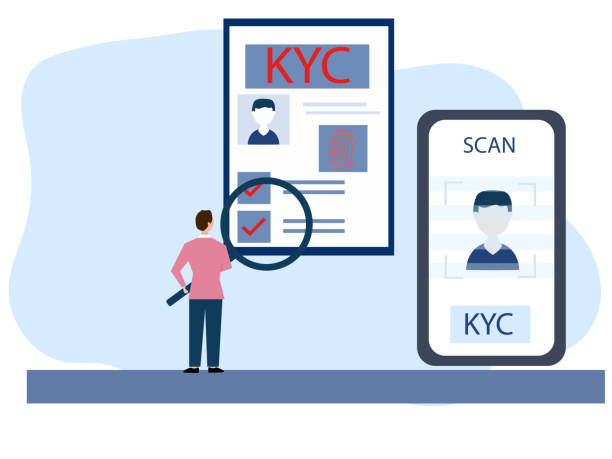
Professional website design is only the first step on the path to a successful online presence.
After launch, continuous website maintenance and updates are of vital importance.
A website can be likened to a car that requires periodic servicing for optimal performance.
Neglecting this can lead to security issues, reduced speed, functional errors, and even loss of search engine rankings.
Did you know that outdated and unmaintained websites are easy targets for cyberattacks? This is a harsh reality in the digital world.
Website care involves several important aspects.
Firstly, updating core software (such as WordPress or Joomla), plugins, and themes used is crucial.
These updates often include security patches and performance improvements.
Secondly, regular backups of all website data and files are essential to prevent data loss in case of unforeseen incidents.
Thirdly, monitoring website performance, including loading speed, server response time, and identifying broken links, helps maintain user experience.
A professional website design should be structured to simplify the maintenance and update process as much as possible.
Using clean and structured code, and platforms with good documentation, helps the maintenance team perform their work effectively.
Additionally, website content should be periodically reviewed and updated to remain relevant and engaging.
This not only helps with SEO but also shows visitors that your website is dynamic and active.
Investing in website maintenance services ensures the longevity and long-term effectiveness of your website.
| Activity | Description | Frequency |
|---|---|---|
| Software and Plugin Updates | Installing the latest versions of CMS, themes, and plugins for security and performance. | Monthly/Quarterly |
| Data Backup | Creating backup copies of the website database and files. | Weekly/Daily (depending on change frequency) |
| Checking for Broken Links and Corrupt Images | Finding and fixing links that lead to non-existent pages or images that fail to load. | Monthly |
| Security Monitoring | Checking the website for security vulnerabilities and combating attacks. | Continuous |
| Database and Cache Optimization | Cleaning and optimizing the database and managing cache to improve speed. | Monthly |
Choosing the Right Platform and Tools for Website Development

One of the key decisions in the professional website design process is choosing the right platform and tools for its development.
This choice depends on several factors, including budget, required scalability, specific project features, and the development team’s capabilities.
Main options generally include Content Management Systems (CMS) like WordPress, Joomla, or Drupal, or custom development using frameworks and programming languages such as React, Angular, Vue.js for the frontend, and Python (Django/Flask), PHP (Laravel), Node.js (Express) for the backend.
Each of these approaches has its own advantages and disadvantages.
WordPress, as the world’s most popular CMS, is an ideal choice for many small and medium-sized businesses looking for a professional website design with lower development costs and time.
With thousands of themes and plugins, it provides extensive functionalities without requiring complex coding.
However, for larger projects with specific performance needs or highly customized features, custom development might be a better option, as it offers greater flexibility and full control over the code and infrastructure.
It is important that the professional website design team carefully analyzes your needs before starting the project and suggests the best platform and tools commensurate with your business’s long-term goals.
This decision not only impacts development speed and costs but also affects future scalability, security, and ease of website maintenance.
Choosing the wrong platform can lead to costly redevelopments in the future.
Therefore, consulting with experts and thoroughly evaluating options are critical steps in planning a successful professional website design.
Tired of your company’s website not getting the visibility it deserves and losing potential customers? Solve this problem permanently with professional and effective website design by Rasaweb!
✅ Increase brand credibility and gain customer trust
✅ Attract targeted sales leads
⚡ Contact us now for a free consultation!
Measuring Success and Data Analysis; Why Your Website Needs Analytics Tools?

A professional website design is not merely about an attractive appearance and smooth performance; it also includes the ability to accurately measure performance and analyze data for continuous improvement.
After launching a website, the real work truly begins.
How can you tell if your website is truly successful and contributing to your business goals? The answer lies in using web analytics tools, such as Google Analytics and Google Search Console.
These tools provide vital information about visitor behavior, traffic sources, popular pages, conversion rates, and many other key metrics.
Data analysis helps you identify the strengths and weaknesses of your website.
For instance, if you notice that users are leaving your website on a particular page, you can delve deeper to identify the problem and take action to resolve it.
This continuous improvement process is an integral part of every professional website design.
Is your website traffic increasing? Is the conversion rate (e.g., purchases or form completions) satisfactory? Are users spending enough time on your important pages? Answers to these questions provide you with clear insights for future decisions.
Furthermore, data analysis is highly valuable for your SEO and content strategy.
You can see which keywords bring you traffic, which content is more popular, and which pages need further optimization.
This information not only helps improve your search engine rankings but also enables you to produce content that is truly engaging and useful for your audience.
Experienced professional website design teams always emphasize the importance of correctly implementing analytics tools and interpreting data to ensure your website is on the path to success and continuously growing.
Challenges and Solutions for Professional Website Design in Iran’s Competitive Market

Professional website design in Iran’s competitive market comes with its own specific challenges.
Despite the growing number of online businesses and increasing public awareness of the importance of digital presence, the competition to attract audience attention has also intensified.
One of the main challenges is the need to keep pace with rapid technological changes and search engine algorithms.
What is considered standard today might be obsolete tomorrow.
Therefore, a professional website design team must constantly be learning and updating its knowledge.
Another challenge relates to infrastructure issues and internet access in Iran.
Despite recent improvements, internet speed and stability in some regions can still be an obstacle to an optimal user experience.
This forces designers to create websites with maximum speed optimization and minimal reliance on high bandwidth.
Using optimized images, lightweight coding, and local CDNs are among the solutions that can be employed in this regard.
Furthermore, international sanctions have also impacted access to some global tools and services vital for professional website design.
This encourages developers to turn to local solutions and alternative tools, which might create new challenges in terms of security and support.
However, by focusing on creativity and innovation, these challenges can be transformed into opportunities.
Domestic web design companies, with a deep understanding of the Iranian market and culture, can provide localized and effective solutions that meet the specific needs of Iranian businesses and assist them on their path to digital success.
Frequently Asked Questions
| Row | Question | Answer |
|---|---|---|
| 1 | What is professional website design? | The process of building a user-friendly, visually attractive, fast, secure, and search-engine-optimized website that achieves business goals and audience engagement. |
| 2 | Why is responsiveness important in professional design? | Responsiveness ensures that the website displays correctly on all devices (mobile, tablet, desktop) and provides a consistent user experience, which is also vital for SEO. |
| 3 | What is the role of UI/UX in professional website design? | UI (User Interface) focuses on the visual aesthetics and appearance of the website, while UX (User Experience) focuses on ease of use, easy navigation, and enjoyable user interaction with the website. Both are essential for attracting and retaining an audience. |
| 4 | How does website loading speed affect its professionalism? | High loading speed improves user experience, reduces bounce rate, and is an important factor in website ranking by search engines. |
| 5 | What is the importance of SEO in professional website design? | SEO helps the website be seen in Google and other search engine results, attracts more organic traffic, and contributes to business growth. |
| 6 | What role does quality content play in a professional website? | Engaging, relevant, and useful content keeps users on the website longer, enhances brand credibility, and is very important for SEO. |
| 7 | What does professional website security include? | Using an SSL certificate, regular updates of the platform and plugins, regular backups, using strong passwords, and protecting against cyberattacks. |
| 8 | Which platforms are common for professional website design? | Content Management Systems (CMS) like WordPress and Joomla, as well as coding frameworks like React, Angular, and Vue.js for custom development. |
| 9 | What are the main phases of professional website design? | Planning and research, UI/UX design, coding and development, testing and launch, and finally maintenance and support. |
| 10 | What is the main difference between a professional and an amateur website? | A professional website is built with a focus on business goals, user experience, security, performance, and optimization, while an amateur website usually lacks these comprehensive and targeted approaches. |
And other services of Rasaweb Advertising Agency in the field of advertising
Smart Marketplace: An innovative platform for improving customer behavior analysis with custom programming.
Smart Conversion Rate Optimization: A professional solution for analyzing customer behavior with a focus on optimizing key pages.
Smart Content Strategy: A new service for increasing customer attraction through custom programming.
Smart Website Development: A combination of creativity and technology to attract customers through key page optimization.
Smart Advertising Campaign: A new service for increasing customer attraction through marketing automation.
And over a hundred other services in the field of internet advertising, advertising consultation, and organizational solutions
Internet Advertising | Advertising Strategy | Advertorials
Resources
- The Importance of Professional Website Design in Modern Businesses
- Challenges of Website Design for Small Businesses
- 10 Reasons to Have a Professional Website
- Comprehensive Guide to Successful Website Design
? Ready to revolutionize your business in the digital world? Rasaweb Afarin Digital Marketing Agency, specializing in SEO, online advertising, and custom website design, is your reliable partner on the path to growth. For a powerful online presence, contact us today!
📍 Tehran, Mirdamad Street, next to Bank Markazi, Southern Kazeroun Alley, Ramin Alley, No. 6

